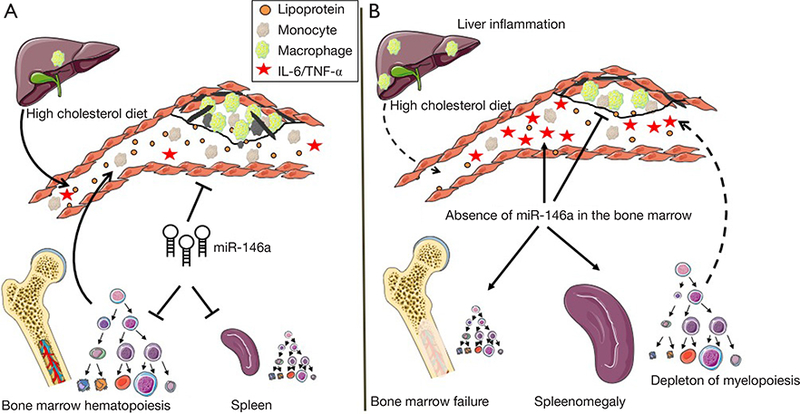Figure 2.

Paradoxical reduction of atherosclerosis in the absence of miR-146a. (A) Recent studies have reported a benefit in enhancing miR146a in myeloid cells (13) and the endothelium (18) to suppress NF-κΒ activity and thereby the progression of atherosclerosis in hyperlipidemic mice. (B) A recent study by Cheng et al. (15) uncovered that an elimination of miR146a in the BM does not enhance diet- induced atherosclerosis but rather results in a reduction of lipid rich lesions in the aortic arch of hyperlipidemic mice. The paradoxical effect appears to stem from diet-induced BM failure and aberrant extramedullary hematopoiesis in the spleen that result in a loss of myeloid cell production. A lack of hematopoietic miR-146a production also resulted in increased cytokine levels in the circulation but reduced plasma lipid levels due to liver inflammation and reduced lipoprotein production. Together, such metabolic and inflammatory dysregulation combined to suppress the growth of atheroma in hyperlipidemic mice.
